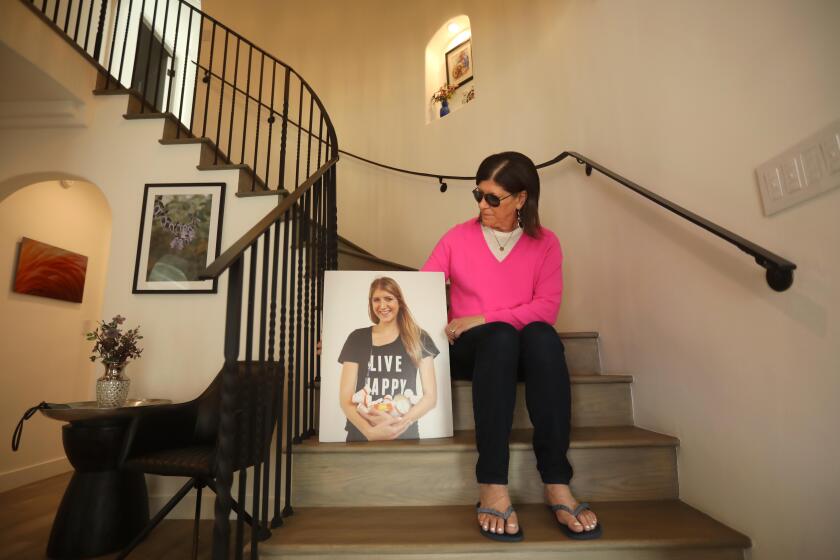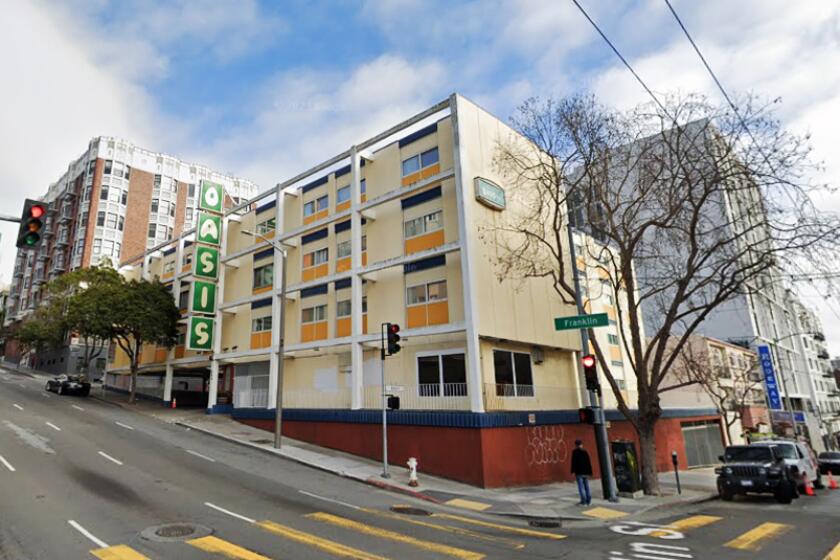City Report Links Gangs to AIDS ‘Time Bomb’
Phillip “Muck” Brown once lived the life of a true gangster.
By 17, he was a professional car thief, a PCP abuser and a “war chief” for a Crips gang in West Los Angeles. But in the summer of 1987, while he was serving a two-year prison term, his dangerous living caught up with him.
He learned that he was HIV-positive, a result, he said, of shooting up cocaine, heroin and other drugs.
For years, he lived “on the down low,” telling no one but a probation officer. “It’s about pride,” said Brown, 48. “When you’re a gangster, reputation is all you have.”
Brown is part of what Los Angeles health officials are calling “a ticking time bomb” in the AIDS epidemic. A city-commissioned study to be released today identifies gang members as particularly vulnerable to infection by the human immunodeficiency virus, not only because of high-risk behavior but also because of fallacious beliefs about the disease and a tendency to stigmatize those who have it.
“We were stunned -- amazed -- that nobody’s looked at this before,” said Stephen Simon, the city’s AIDS coordinator. “Here’s a high-risk population that obviously engages in high-risk behavior, one that is uninformed and realizes it’s uninformed, and there is no data on this population.”
The $75,000 study, among the first of its kind in the country, surveyed 300 gang members, about half of whom agreed to be tested for HIV.
One tested positive, and almost 90% said they’d had unprotected sex in the last 12 months. Also, 31% said they believed that a vaccine had recently been developed that prevents HIV infection; 54% said their friends would stay away from them if they were infected with HIV; and 91% said their communities needed more information on the virus.
“All you need is one simple viral transmission for it to spread to the entire group,” said Simon. “It just hasn’t, by luck of the draw.”
Simon will recommend that his office collaborate with gang intervention groups and launch an informational campaign.
The report “was shocking,” said Councilman Tony Cardenas, who chairs the city’s gang violence committee and will introduce a motion endorsing Simon’s recommendation, which could cost up to $200,000.
“The first thing that came to my mind is that this is a deadly bullet, when a gang member’s ignorance and macho attitude puts their lives at risk and [those of] their own family members.”
In the international arena, the issue is nothing new.
The United Nations doles out thousands of dollars in grants to organizations targeting at-risk youth -- some of them gang members formerly from the U.S. -- for HIV/AIDS prevention.
El Salvador-based Homies Unidos, which has become a refuge for former gang members deported from the United States, received a $36,000 grant to battle the spread of AIDS among its clients.
Luis Romero, head of the program in San Salvador, said infected gang members approached him pleading for help. So many of his clients come from the United States that he launched “Project Welcome Home,” in which the group greets deportees at the airport to offer services.
Although gangs have not been the focus of HIV/AIDS prevention in the United States, officials have known that minorities account for most new AIDS cases.
In 2004, minorities accounted for 72% of the 42,331 AIDS cases diagnosed in the United States, according to the Centers for Disease Control and Prevention. African Americans make up 18% of the AIDS cases ever reported in California, although they account for 7% of the state’s population.
In Los Angeles, where an estimated 39,000 gang members live, cash-strapped nonprofits, including the Minority AIDS Project, have attempted outreach through Brown and other former gang members.
“Somebody took a chance on me,” said Charlie Parker, 51, a former gang member and peer health educator with the Minority AIDS Project. “I wanted to be able to give back to the community because I had a chance to live. I felt it was my duty.”
The group’s executive director, Victor McKamie, who is also a former member of the Crips, hit the streets with a rap song detailing the risks of HIV. He handed out blue condoms to Crips gang members and red ones to Bloods, adhering to the gangs’ signature colors.
Brown, who is unemployed and on disability, spends his days promoting prevention. He helps to dispel the stereotypes and misinformation about HIV victims that he says still prevail among gang members.
“For them, it’s not even about whether to tell their friends that they’re HIV-positive,” he said. “If they have HIV, they probably don’t even know it yet.”
More to Read
Start your day right
Sign up for Essential California for news, features and recommendations from the L.A. Times and beyond in your inbox six days a week.
You may occasionally receive promotional content from the Los Angeles Times.






